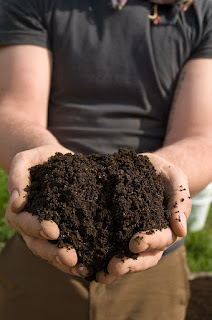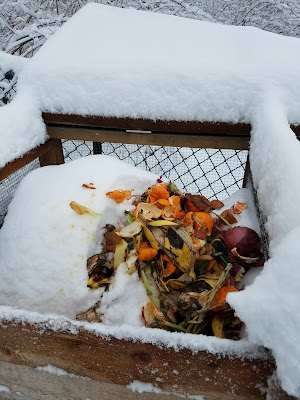This is my favorite time of year. Not only will I start
wearing sweaters and boots soon, but the weather is perfect for being outside,
camping, and harvesting my finished compost. So grab your pumpkin-spice latte,
cable-knit sweaters, and a pitchfork and let’s harvest some black gold
together.
Step One: Gear up
I always bring a few five gallon buckets (old kitty litter
containers in my case), my pitchfork, my screener, and a little container for
garbage (usually an old flower pot). You may also want a shovel.
Step Two: Remove all obstacles.
If you have a conventional backyard composter, pick the
thing up and move it off your pile. This may be easier said than done. It
usually involves me shimming my composter back and forth like we are slow
dancing. Maybe we are.
Step Three: Put the half-baked compost into buckets
When you only have one bin, you often have recently added
food scraps. Shovel or fork these items into your handy buckets. These can go
back in your pile in the end.
Step Four: To screen or not to screen
Step Five: Use your finished compost
If you don’t have a wheelbarrow, buckets work too. Here is a photo of my harvesting set-up last fall when my husband was using the wheelbarrow for a wall project.
Step Six: Start a new compost pile
Now you can add some shredded leaves to all of your
unfinished compostables to start the cycle all over again.
Fall is an ideal time for harvesting because before we know
it we will be buried in leaves and need a place to stash them.
Happy
Harvesting!






































